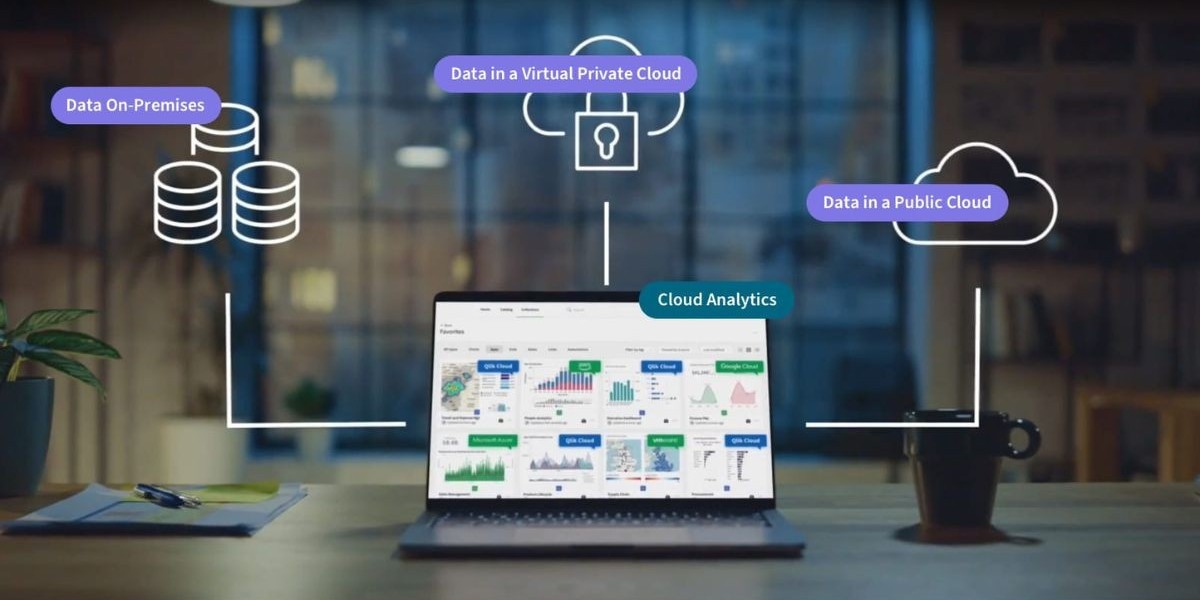In the digital economy, data is one of the most valuable assets a business can have. Yet, the ability to process, interpret, and apply data effectively often separates successful organizations from the rest. This is where cloud analytics comes into play. By leveraging cloud computing, organizations can store, manage, and analyze massive volumes of data without the limitations of traditional on-premises systems. Cloud analytics is not only cost-effective but also scalable, agile, and essential for businesses looking to thrive in a data-driven world.
This article explains what cloud analytics is, how it works, why it matters, and the best practices for making the most of it.
Understanding Cloud Analytics
Cloud analytics refers to the practice of analyzing data that is stored and processed in cloud-based systems. Unlike traditional analytics solutions that rely on physical infrastructure, cloud analytics uses remote servers and distributed computing to provide organizations with real-time insights.
The concept is built on the combination of cloud computing and data analytics. The cloud offers storage and processing power, while analytics provides the tools and methods to uncover trends, patterns, and insights. Together, they allow businesses to make data-driven decisions at scale.
How Cloud Analytics Works
At its core, cloud analytics follows a structured process that involves data collection, storage, integration, analysis, and visualization.
Data Collection and Ingestion
Organizations gather data from multiple sources, including websites, applications, sensors, and customer interactions. This data is streamed or uploaded into cloud platforms, where it is prepared for analysis.
Storage and Management
Instead of relying on costly hardware, cloud analytics solutions store data securely in virtual environments. Providers often integrate advanced data managed services to ensure information remains organized, accessible, and optimized for performance.
Processing and Integration
Once stored, the data is processed using cloud-based tools. These platforms often support integration with multiple data sources, ensuring organizations can analyze structured and unstructured data seamlessly.
Analysis and Modeling
The true power of cloud analytics lies in its ability to process large volumes of information quickly. Businesses use machine learning algorithms, statistical models, and advanced data analytics services to uncover trends and generate actionable insights.
Visualization and Reporting
The final step involves presenting the analyzed data in a way that is easy to understand. With the help of data visualization service providers, businesses can create dashboards, reports, and interactive charts that simplify decision-making.
Benefits of Cloud Analytics
Scalability and Flexibility
Cloud analytics solutions grow with your business. As data volumes increase, organizations can scale up without investing in additional infrastructure.
Cost Efficiency
Moving to the cloud eliminates the need for expensive servers and hardware. Businesses pay only for the storage and processing power they use, making it a cost-effective option.
Real-Time Insights
With data stored and processed in the cloud, organizations can access insights in real time. This enables faster decision-making and better responses to market changes.
Enhanced Collaboration
Cloud-based systems allow teams from different locations to access the same data simultaneously. This fosters collaboration and ensures alignment across departments.
Improved Security
Cloud platforms provide advanced security features, from encryption to compliance support, ensuring sensitive data remains protected.
Cloud Analytics vs Traditional Analytics
Traditional analytics relies on in-house infrastructure, which often leads to limitations in storage, speed, and scalability. Cloud analytics, however, operates on distributed computing, enabling businesses to process large datasets quickly and efficiently.
Moreover, traditional systems often require significant upfront investment in hardware and IT staff. Cloud solutions operate on a subscription or usage-based model, lowering the entry barrier for businesses of all sizes.
Best Practices for Cloud Analytics
Define Clear Objectives
Before adopting cloud analytics, organizations should set clear goals. Whether it is improving customer retention, optimizing operations, or identifying new revenue streams, a defined purpose ensures that analytics efforts deliver measurable results.
Ensure Data Quality
Analytics is only as effective as the quality of the data it uses. Businesses must focus on cleansing, validating, and maintaining data accuracy to avoid misleading insights.
Adopt Scalable Architecture
As organizations grow, so does their data. Choosing a scalable cloud solution ensures that businesses can handle increasing workloads without disruptions.
Embrace Automation
Automation in cloud analytics streamlines processes such as data integration, reporting, and anomaly detection. This reduces manual effort and improves efficiency.
Prioritize Security and Compliance
With rising concerns about data privacy, it is critical to select providers that offer strong compliance and security standards. Protecting sensitive data should always be a top priority.
Focus on Visualization
Analytics should empower decision-makers, not overwhelm them. Investing in strong visualization tools ensures that insights are accessible and actionable for all stakeholders.
Foster a Data-Driven Culture
Technology alone is not enough. Organizations must build a culture where data-driven decision-making is encouraged at every level. This ensures that insights derived from cloud analytics translate into real business value.
Use Cases of Cloud Analytics
Retail
Retailers use cloud analytics to personalize customer experiences, track inventory in real time, and optimize supply chains.
Healthcare
Hospitals leverage cloud analytics to predict patient needs, improve treatment outcomes, and manage resources more efficiently.
Finance
Banks and financial institutions use cloud analytics to detect fraud, assess credit risk, and streamline regulatory compliance.
Manufacturing
Manufacturers analyze production line data to reduce downtime, improve efficiency, and predict maintenance needs.
Future of Cloud Analytics
The future of cloud analytics is closely tied to emerging technologies such as artificial intelligence, machine learning, and automation. As these technologies mature, cloud analytics will evolve from descriptive insights to predictive and prescriptive recommendations.
Businesses that embrace these advancements will gain a stronger competitive edge, using data not just to understand what has happened but also to anticipate future opportunities and risks.
Conclusion
Cloud analytics is transforming how businesses collect, process, and act on data. By moving analytics to the cloud, organizations can benefit from scalability, real-time insights, cost efficiency, and improved collaboration. To maximize these benefits, companies must follow best practices such as ensuring data quality, prioritizing security, and adopting a data-driven culture.
As businesses continue to generate massive volumes of information, cloud analytics is no longer a luxury—it is a necessity for staying competitive in a data-first world.
Frequently Asked Questions
What is cloud analytics in simple terms?
Cloud analytics is the practice of analyzing data stored and processed in cloud systems to gain insights and support better decision-making.
How does cloud analytics work?
Cloud analytics works by collecting data from multiple sources, storing it in the cloud, processing it with analytics tools, and visualizing it for decision-making.
Why is cloud analytics important for businesses?
It provides scalability, real-time insights, cost savings, and improved collaboration, all of which help businesses stay competitive.
What industries use cloud analytics the most?
Industries such as retail, healthcare, finance, and manufacturing widely adopt cloud analytics to improve operations and customer experiences.
How can businesses start with cloud analytics?
The first step is defining objectives, followed by selecting a scalable cloud platform, ensuring data quality, and adopting visualization tools.








